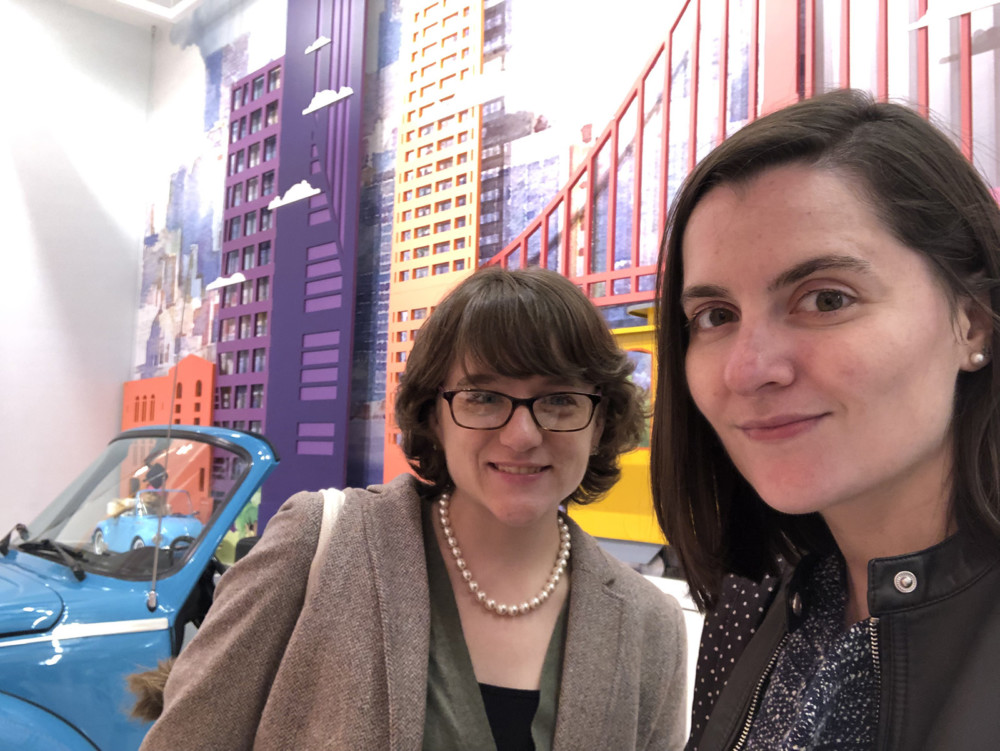By Emily Brindley
The Hartford Courant
WWR Article Summary (tl;dr) As Emily Brindley reports, “32-year-old Allison Horrocks and 33-year-old Mary Mahoney see history as a way of connecting with others. And they’re using American Girl dolls to illustrate that point.”
The Hartford Courant
For many people, “history” is a topic of middle and high school classes, a thing of the past with no application to daily life.
But 32-year-old Allison Horrocks and 33-year-old Mary Mahoney see history as a way of connecting with others. And they’re using American Girl dolls to illustrate that point.
Horrocks and Mahoney, who both earned undergraduate degrees from Hartford’s Trinity College and Ph.D.s in history from UConn, launched a podcast called “American Girls,” in February.
In the twice-monthly episodes, the two historians unearth the American Girl books that many of us read as children and tweens. The books follow each American Girl as they live in their respective time period, the classic series of characters are set anywhere from the 1760s to the 1970s.
American Girl offers an easy point of access into the study of history, something that many listeners don’t usually think about in their adult lives, Horrocks said.
“They haven’t really been connected to these kinds of topics since they were kids,” Horrocks said. “They’re listening, in some ways, more eagerly because they haven’t thought about this kind of stuff in 25 years.”
After inviting listeners to step into a historical world on each episode, Horrocks and Mahoney launch into debates about the problematic aspects of American Girl, draw links to pop culture and talk about the lessons that the characters learn.
And for many, the podcast hits home.
The two women’s easy on-air banter, they’re best friends in real life, too, combined with the sometimes-heavy topics that the American Girl books bring up has spurred many listeners to reach out to the show with their own personal stories.
For example, after airing an episode about the character Josefina Montoya who deals with the grief of losing her mother, listeners sent in stories about their own loss, some of them about the loss of a parent when they were a child.
Horrocks said she answers at least 15 messages a day, including emails and direct messages on social media. At least half of those, she said, are lengthy paragraphs of appreciation and personal connection. Mahoney described many of the messages as “intimate.”
“We’re getting people’s stories,” Horrocks said. “I feel like the luckiest woman in the world sometimes.”
When Horrocks and Mahoney first launched the podcast, they talked about it at the National Council on Public History’s annual meeting, which was held in Hartford in March. That gave them an early base of listeners, many of whom were already listening to other history podcasts.
But in August, New York Times television critic Margaret Lyons wrote a column about the podcast, touching on her own childhood memories of American Girl and the experiences that shaped her into the person she is today.
The column is, in short, a wholehearted endorsement of the podcast. Shortly after the column published, the podcast’s fan base began to grow. On Instagram, the “American Girls” podcast went from 2,000 to 7,000 followers, Horrocks said.
After Lyons’ column, Horrocks and Mahoney saw an influx of listeners they hadn’t yet truly tapped into: those who don’t have a predefined passion for history.
The podcast is made to be friendly to those listeners, Mahoney said.
“I think sometimes people think history is very inaccessible … that there’s no way it could be of interest to you,” Mahoney said. “In reality, it’s just a form of storytelling and meaning-making.”
As much as the podcast is a story of telling stories, it’s also a story of friendship.
Although Horrocks and Mahoney met briefly when they were both undergrads at Trinity, they became actual friends while Ph.D. students at UConn.
And since meeting, they’ve each labeled the other as their best friend.
Both women said that the idea of a best friend, or even close friendship in general, seems to come more naturally to millennials than to older age groups.
Horrocks said that she once gave a talk, which Mahoney attended. When a man in his 50s asked Mahoney why she was there, she candidly told him it was because Horrocks is her best friend.
The man responded that the idea of a best friend is childish, Horrocks said.
“Maybe in other generations, that’s a thing for children,” Horrocks said. “I think especially women our age are really open about the importance of friends.”
The genuine closeness between Horrocks and Mahoney bleeds into the podcast, smoothing the discussion and keeping listeners engaged.
And when listeners do reach out, whether with a short comment or an involved saga, they enter that intimate space, Mahoney said.
“When we started this show, we thought maybe a couple of friends would listen,” Mahoney said. “That’s how it started, but the life of the show has really been a surprise for us.”
___
Distributed by Tribune Content Agency, LLC.














































































































































































































































































































































































